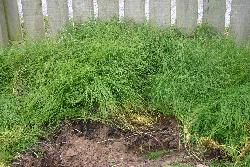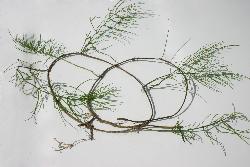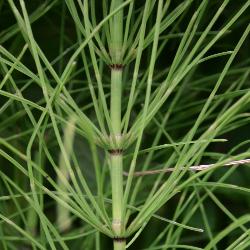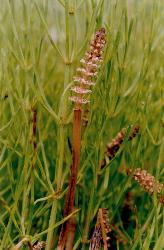- Taxon
- Weed
- Gallery
Habitat: bank, clay, coast, dry, forest, gravel, hill, lake margin, loam, lowland, margin, moist, open, pasture, ridge, riparian, river terrace, riverbed, roadside, sand, shaded, sheltered, shrubland, silt, slope, stone, terrace, track, wasteland, wetland
Dispersal: Spores, vegetative
Recognition
- a mostly upright and long-lived plant re-growing each year from creeping underground stems.
- it produces two distinctly different types of stems, without obvious leaves, and does not have any true flowers.
- its green 'vegetative' stems are tall, thin, and produce several spreading branches at each of their joints.
- its whitish or pale brown 'fertile' stems are shorter, thicker, and topped with a cone-like reproductive structure.
- this reproductive structure (1-4 cm long) is greenish to brownish in colour and consists of numerous scale-like structures.
[From: Environmental Weeds of Australia]
References
Biosecurity New Zealand 2012: Regional Pest Management Strategies Database. http://www.biosecurityperformance.maf.govt.nz/
Connor, H.E. 1977: The Poisonous Plants in New Zealand. Edition 2. Government Printer, Wellington.
Howell, C. 2008: Consolidated list of environmental weeds in New Zealand. DOC Research & Development Series 292: 42.








